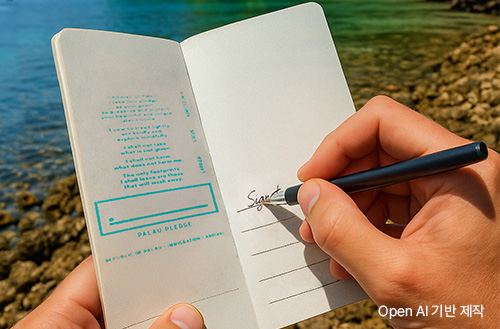


Columnist
Myungkwan Son Sustainability Management Center
#INTRO
How did you endure this scorching summer? With the relentless heat, “surviving” feels a more fitting word than simply “getting by.” Unfortunately, this summer will likely go down as the coolest one we’ll experience for the rest of our lives. Climate change driven by global warming is becoming a reality faster than anticipated.
Corporate ESG Reports and Climate Adaptation Plans
The sweltering summer also marks the season when companies release their sustainability reports. A notable trend in recent years is that many companies now treat climate change as their top priority. Some are even developing climate adaptation plans, under the assumption that climate change will accelerate further. This column examines several critical climate issues and how companies are responding to them.
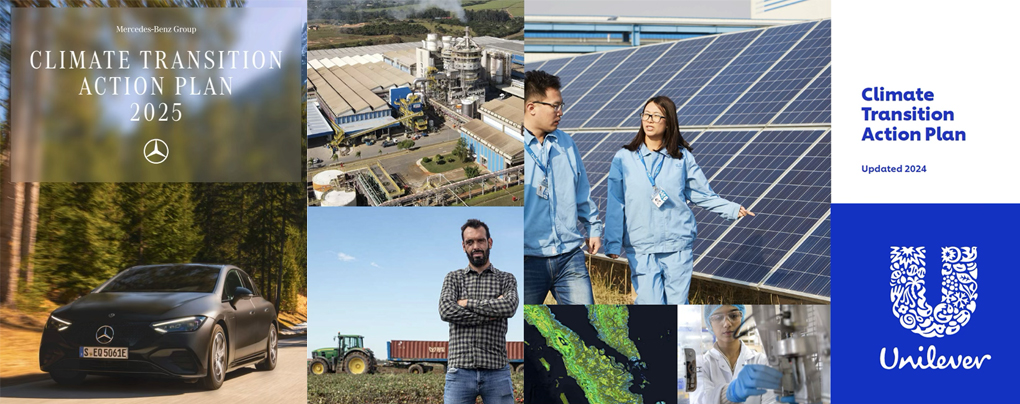
Source: Mercedes-Benz, Unilever
Corporate Climate Transition Plan Reports

Source: SK Telecom 2024 Sustainability Report
“Climate-Related Risks and Opportunities” Analyzed by XX Company
1 Increasingly Volatile Raw Material Prices
To begin with, let’s look at palm oil, a critical ingredient in the cosmetics industry. Palm oil is extracted from the fruit of oil palm trees, primarily cultivated in Southeast Asia. Year-round harvesting once ensured a stable supply, but climate change has brought repeated cycles of extreme heat, drought, and flooding to the region in recent years, causing erratic production volumes and unstable raw material prices. The problem is compounded by excessive geographic concentration. While palm oil accounts for roughly 40% of global vegetable oil consumption, over 80% comes from just two countries: Malaysia and Indonesia. If extreme heat degrades growing conditions in these regions, or if wildfires and droughts disrupt supply, a global palm oil crisis becomes highly likely.
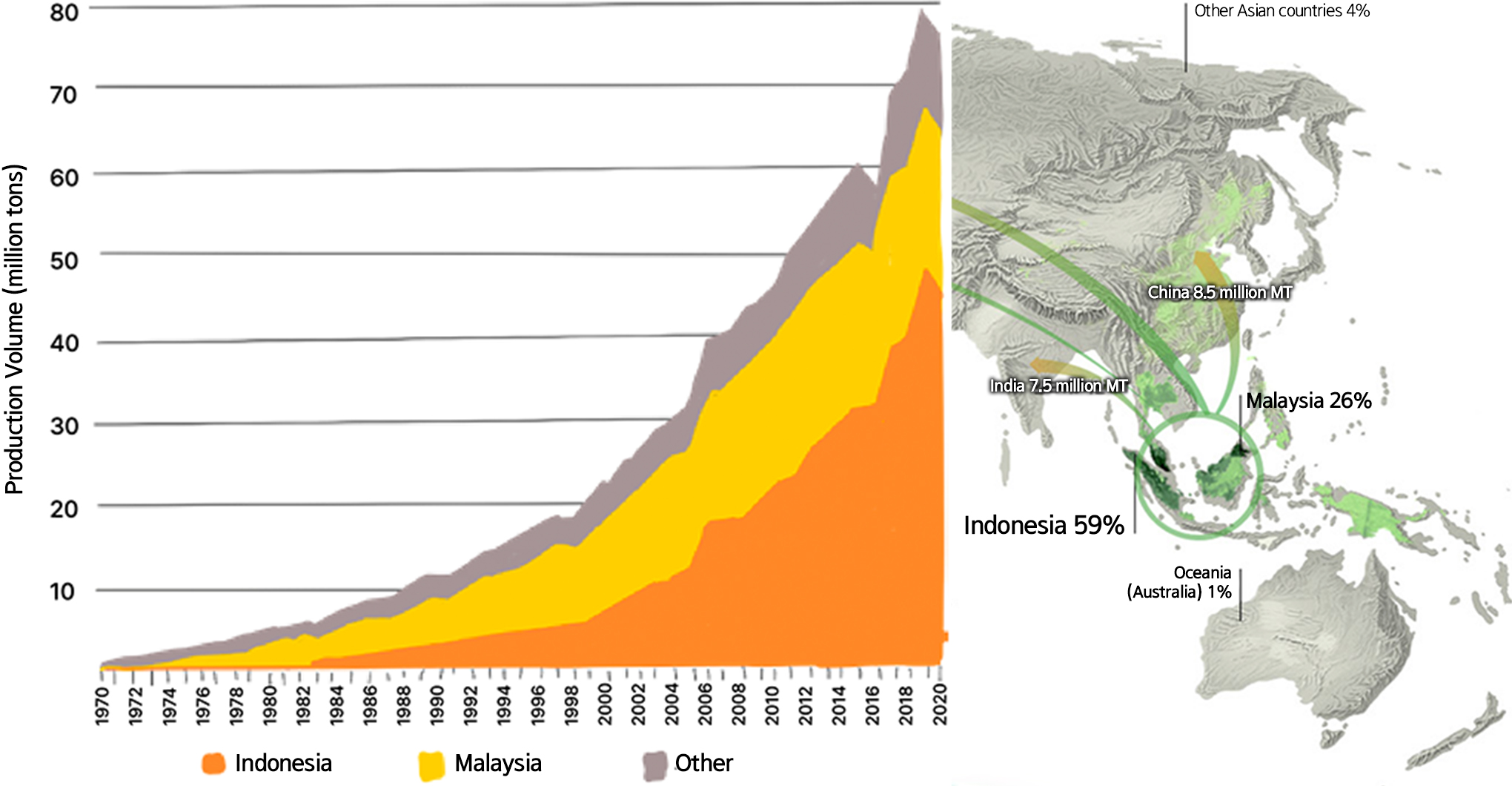
Source: Mission Failed: The Limitations of Palm Oil Certifications in Preventing Deforestation (SFOC), WWF: Palm Oil Buyers Scorecard
Palm oil production has grown 40-fold over the past 50 years, with 80% coming from just two countries.
Companies are now faced with a clear challenge — finding long-term alternatives to ensure stable raw material supplies. Leading companies are using satellite monitoring and blockchain technology to track and prevent indiscriminate palm plantation expansion and harvesting, while expanding sustainable farming education for palm oil growers. Amorepacific, for instance, uses RSPO (Roundtable on Sustainable Palm Oil)1) certified palm oil (MB grade) for over 90% of the palm oil in its products.

Source: Nestle, Mission Failed: The Limitations of Palm Oil Certifications in Preventing Deforestation (SFOC)
2 “Water”: A Problem Whether Scarce or Abundant
This summer, alongside the heat, another climate issue emerged: the Gangneung drought. Rainfall far below normal left Obong Reservoir completely dry, restricting not only agricultural water but also the municipal water supply. Fire trucks and water supply helicopters were mobilized from across the country. What if Amorepacific’s manufacturing facilities had been located in Gangneung? We would likely have had to halt operations for at least two months and pray for rain.
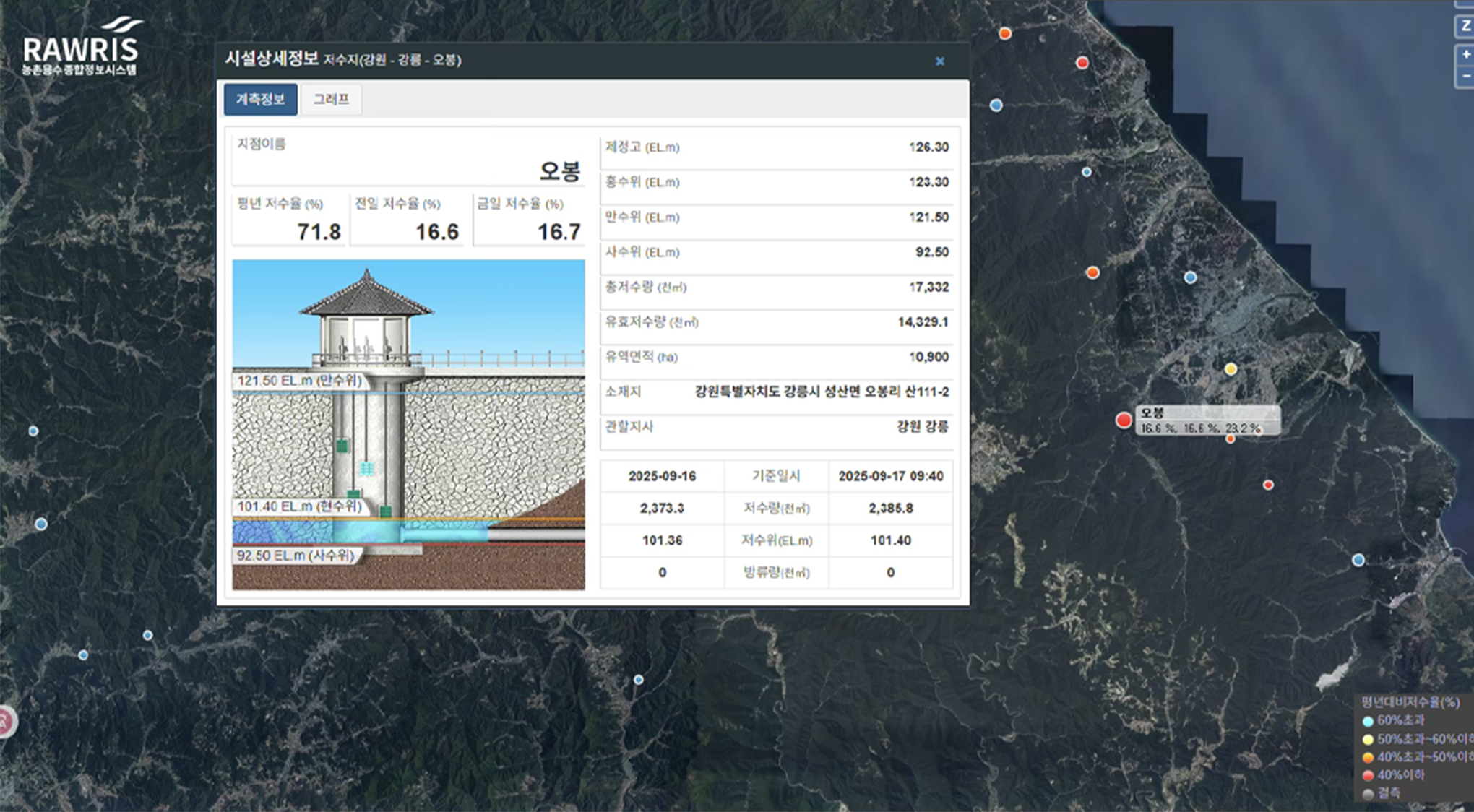
Source: Rural Agricultural Water Resource Information System (RAWRIS)
Obong Reservoir, where water storage dropped to 16%

Source: Money Today
The dried-up Obong Reservoir and water trucks assembled from across the nation
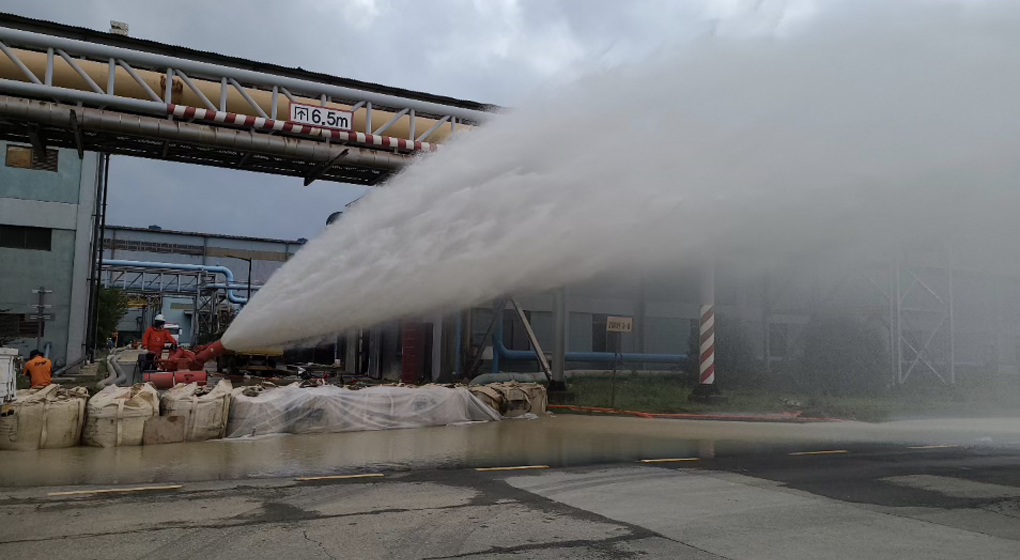
Source: Money Today
POSCO’s 2023 flood damage. Operating profit fell 46% year over year, possibly due to this impact.
Earlier this year, I attended a meeting hosted by Korea Water Resources Corporation, where I heard about water management strategies and challenges from various domestic companies. One case particularly stood out. It involved a manufacturer operating large-scale facilities that use roughly 100 times more water annually than Amorepacific due to the nature of its industry.
This company thoroughly reviewed local water resources and risks before establishing its factory, but declining rainfall in recent years created industrial water shortages, eventually pushing operations to a crisis point. They actually had to temporarily halt the factory operations this year due to water scarcity. “Water,” once considered an infinite resource, had become a critical risk capable of shutting down the entire facility.
In response, the company began working with local governments to explore ways to expand water resources and invested in equipment to reuse water within its processes. It’s a vivid reminder that climate change is no longer an abstract idea — it’s disrupting business operations in real time. Companies are now carefully reassessing water resources near their facilities. As the climate crisis intensifies faster than expected, new simulations and risk analyses of intensified drought and flooding are becoming essential.
Corporate water management strategies vary. At Amorepacific’s Beauty Park facility, rainwater and wastewater are recycled for use as landscaping water across the approximately 82,600-square-meter (25,000 pyeong) site. An AI-based automated control system linking sensors, water level gauges, inverters, and automatic valves minimizes process variations, securing around 23,000 tons of reusable water annually.
Some leading companies even aim for “water positivity,” returning more water to nature than they withdraw, contributing to sustainable water management. They’re working to conserve and restore water resources by improving water use efficiency, reusing treated wastewater, enhancing watershed quality, and securing additional water sources.
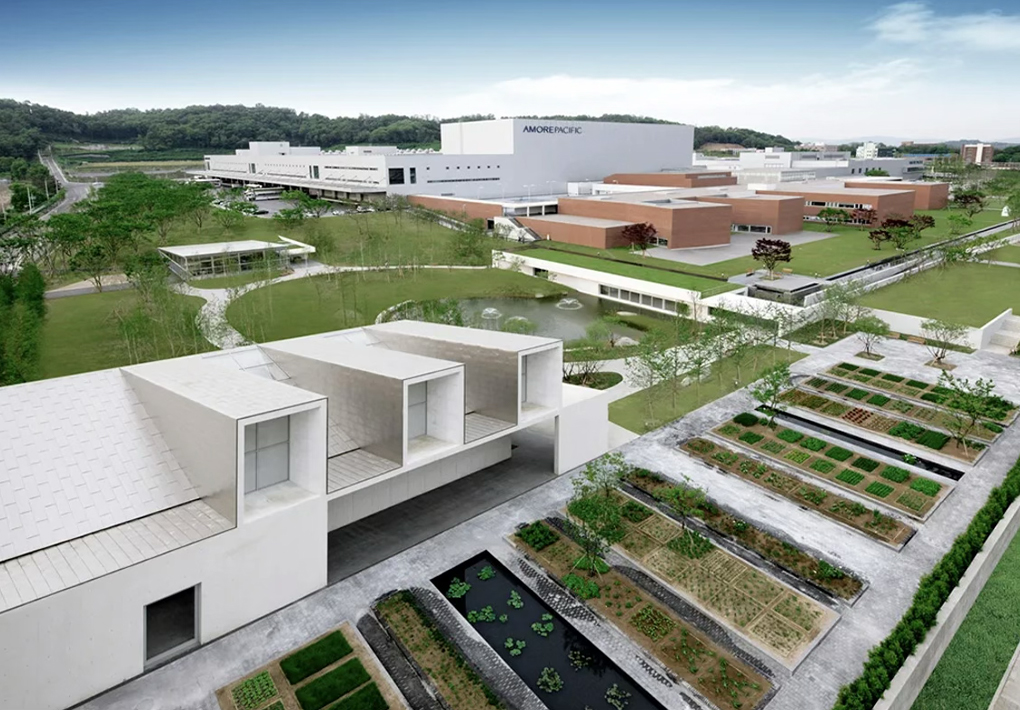
Source: Amorepacific website
Amorepacific Osan Beauty Park. Rainwater and wastewater are recycled for landscaping use.
3 Climate Disasters That Strike Without Warning
Beyond these examples, climate risks come in many forms. This year continues to break records worldwide, with climate data reaching new highs and lows.
Typhoons and Heavy Rainfall: In 2023, POSCO’s Pohang Steelworks suffered approximately 1.3 trillion won in damage due to record rainfall that flooded the facility. Production lines ground to a halt, triggering cascading damage across suppliers and customers.
Heat Waves: In summer 2025, several nuclear power plants in France and Switzerland reduced operations or shut down entirely when adjacent rivers and waterways became too warm to provide adequate cooling.
Cold Snaps: In January 2025, widespread cold waves and blizzards across the central and eastern United States left over 365,000 households without power, and some areas experienced water supply issues when water infrastructure shut down.
These cases highlight the need to prepare for increasingly severe and diverse weather disasters. Many companies are now incorporating multi-hazard designs that account for floods, typhoons, and earthquakes, while strengthening tsunami barriers at coastal facilities as proactive measures. To prepare for heat waves, they’re upgrading factory cooling and ventilation systems, adjusting production schedules to avoid peak electricity hours, and using solar power and ESS (Energy Storage Systems) to mitigate power supply risks.
4 Fossil Fuel Regulation and the Renewable Energy Transition
As the world races to cut carbon emissions — the main driver of the climate crisis — fossil-fuel regulations are tightening across the globe, driving a shift toward renewable energy. Nations are implementing reduction strategies through NDCs (Nationally Determined Contributions), while global companies like Apple are requiring thousands of suppliers to achieve RE100 (100% renewable energy use) to reduce the carbon footprint of products like iPhones and Apple Watches. Expanding renewable energy use has become essential for maintaining overseas exports and global business relationships.
Korea’s situation, however, is challenging. Renewable energy generation ranks among the lowest in the OECD, and installation costs remain high. Moreover, Korea imports all of its crude oil, so whenever international tensions rise, oil prices surge, increasing corporate electricity costs. For these reasons, domestic companies are developing diverse power procurement portfolios and exploring renewable energy expansion strategies.
Amorepacific stands among the country’s leaders in this response. Since announcing plans to achieve RE100 by 2030, the company has steadily increased its renewable energy share, with manufacturing facilities already reaching 100% renewable energy. This year, the company plans to achieve RE100 across all domestic and global operations, ahead of the original 2030 target.

Amorepacific Holdings COSVISION Facility’s Solar Power Installation

Source: Amorepacific Sustainability Report
As of 2024, Amorepacific’s renewable energy share reaches 70%, with plans to achieve 100% (RE100) this year.
5 Consumer Changes Driven by Heat Waves
Global warming is gradually shifting customer interests and needs in the cosmetics industry. Rising heat and humidity have particularly increased demand for sunscreen, deodorants, and acne care products. The cosmetics industry has responded swiftly, launching climate-adaptive skincare lines with “cooling and hydrating functions,” while strengthening personal care products with enhanced sweat and odor management features.

Source: Amore Mall
espoir Be Velvet Sebum Cut Cooling Cushion
#OUTRO
The government recently announced plans to expand the existing Ministry of Environment into a “Ministry of Climate, Energy and Environment,” encompassing all three areas. The UK has similarly established a Department for Energy Security and Net Zero to oversee the national response to climate change and the sustainable transition. This demonstrates that climate crisis response has moved beyond simple environmental protection to become a core issue directly tied to national competitiveness and security.
Until now, many companies have focused solely on “climate mitigation”—reducing carbon emissions and cutting plastic use. But the time has also come to focus on “climate adaptation”: surviving in a changing climate.
In this transformation, “crisis” and “innovation” coexist. In the new age of climate crisis, the winners will be those that see beyond the storm — and turn every risk into an opportunity.
 |

Myungkwan Son |
|
|
Amorepacific
|
|
-
Like
0 -
Recommend
0 -
Thumbs up
0 -
Supporting
0 -
Want follow-up article
0



